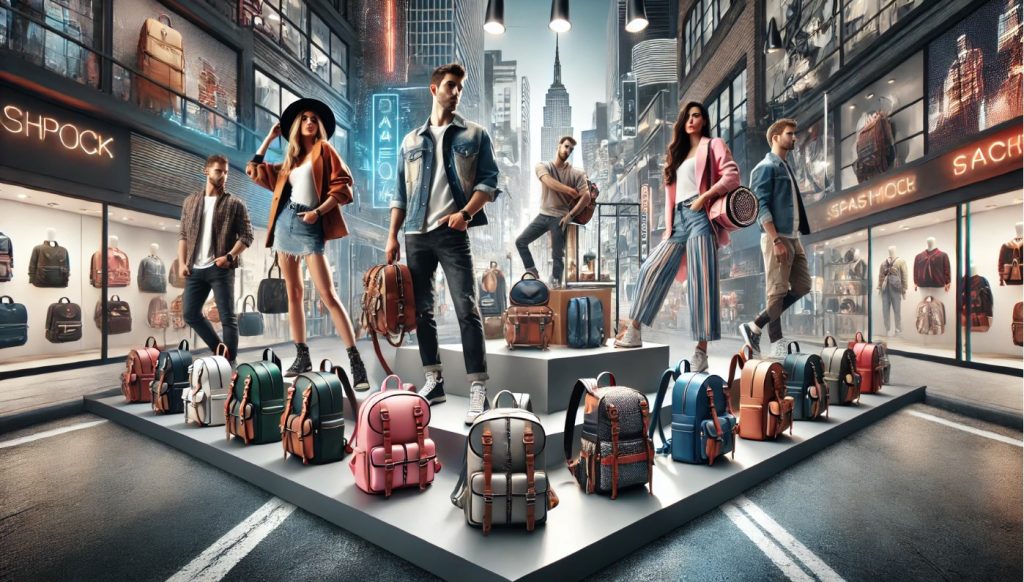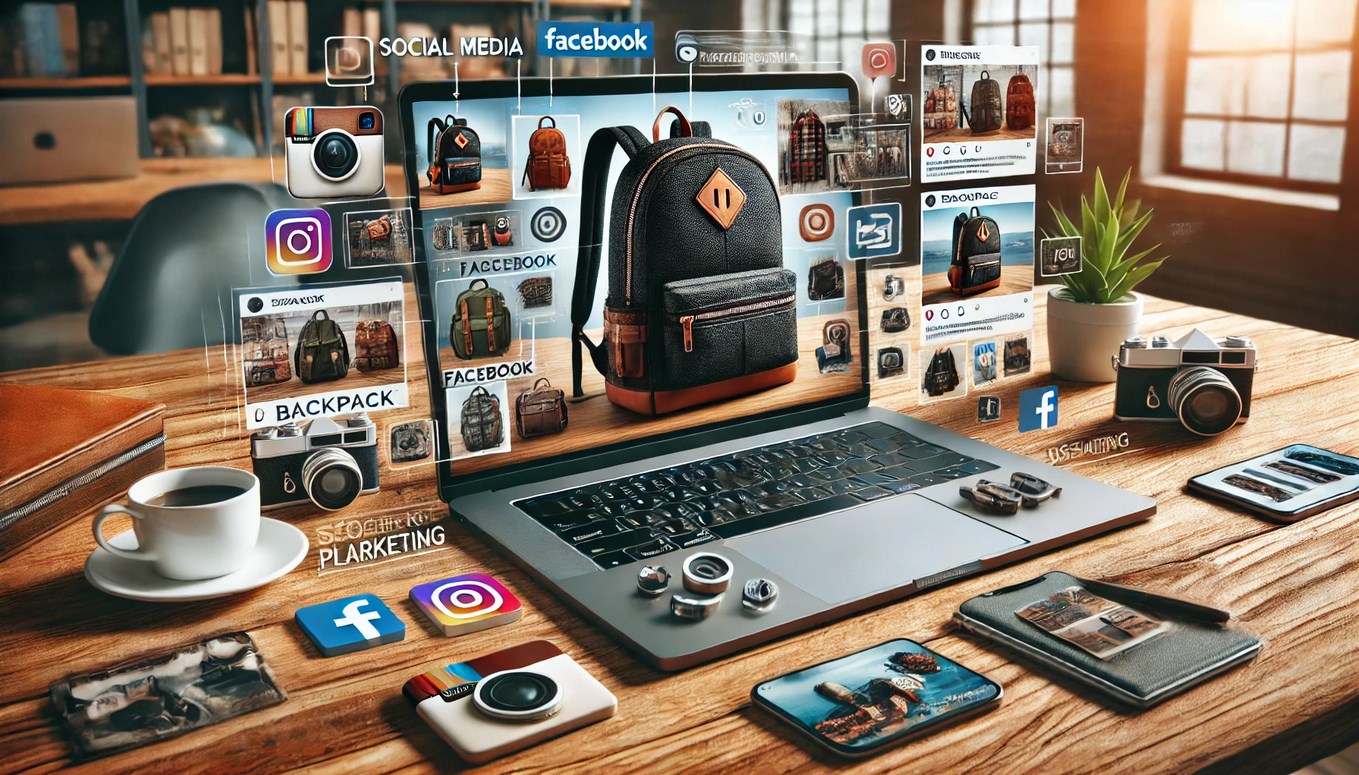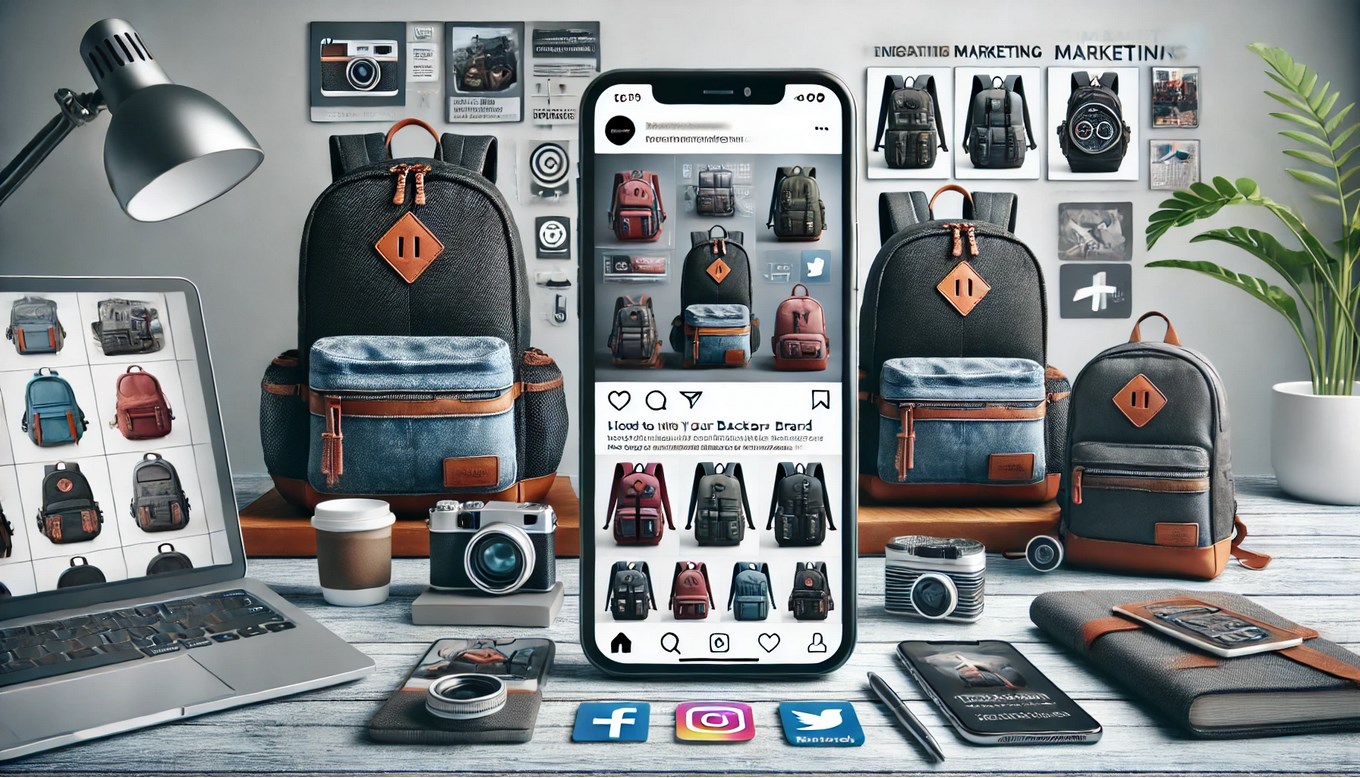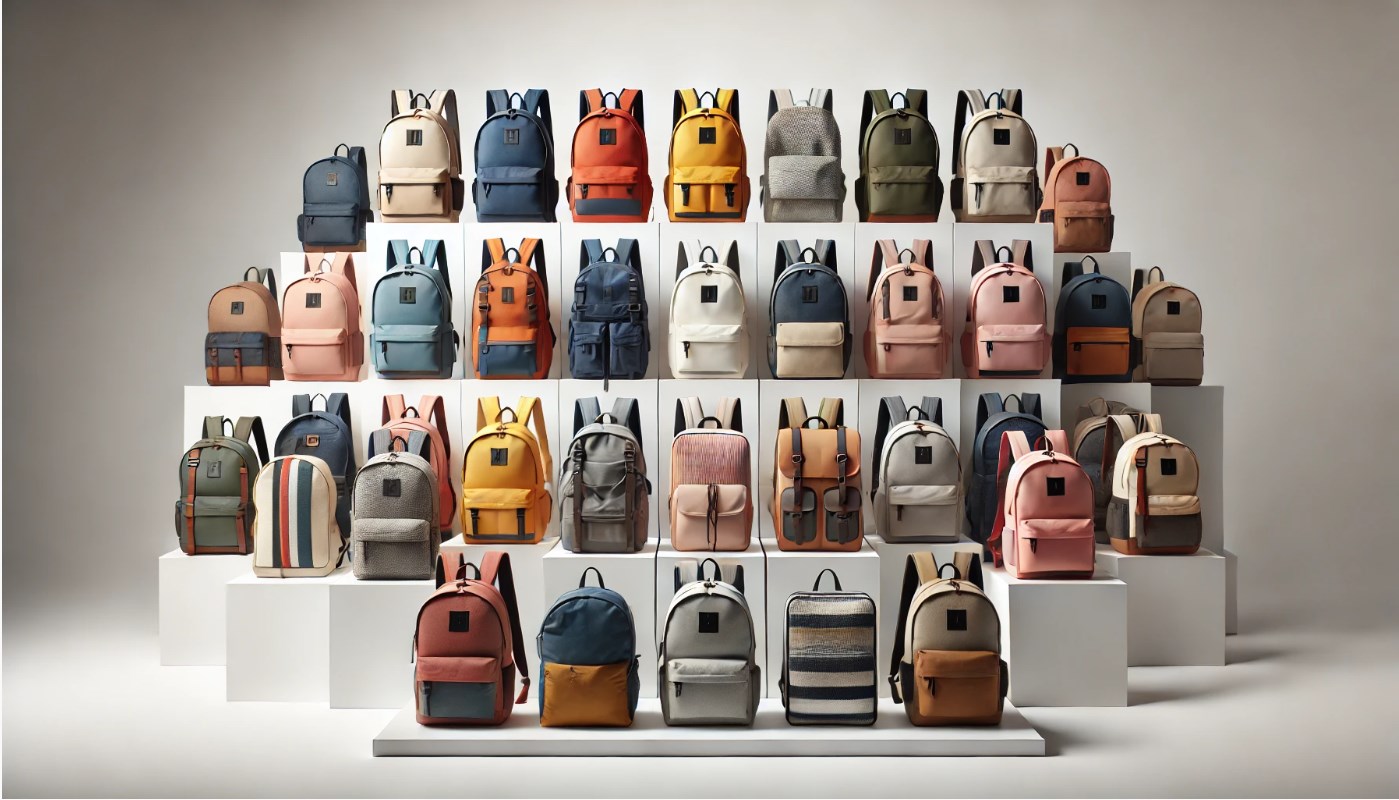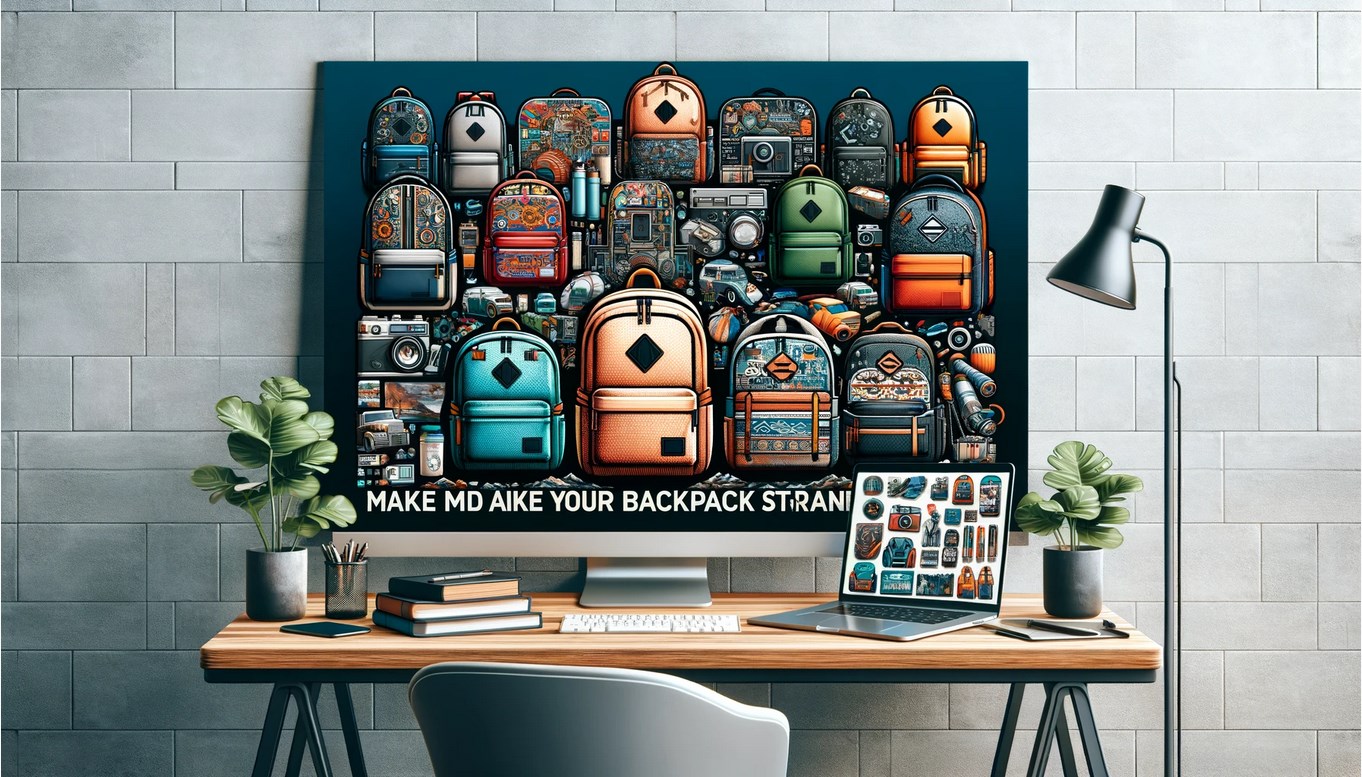In today’s digital landscape, influencer marketing has become one of the most effective strategies to promote products, especially in the fashion and lifestyle sectors. The backpack industry is no exception. By leveraging influencers with loyal followings, you can build brand awareness, engage with your target audience, and drive sales for your backpack brand. However, successful influencer marketing requires more than just a simple collaboration; it demands careful planning, selecting the right influencers, and aligning your brand’s values with their content and audience.
Role of Influencers in Brand Promotion
What Makes Influencers Effective?
Influencers are individuals who have built a reputation and a following on social media platforms through their expertise, credibility, or entertainment value. Their audience trusts their opinions and looks to them for recommendations on products, services, and lifestyles. Because of their strong influence, partnering with the right influencers can help your backpack brand tap into an engaged and loyal audience that might otherwise be difficult to reach.
Influencers act as trusted third parties who can introduce your backpack brand to their followers in an authentic and engaging way. By showcasing your products through their content, influencers can provide exposure and social proof that resonates more effectively than traditional advertisements.
Key Benefits of Influencer Marketing
- Authentic Promotion: Influencers can present your backpack in a more organic and natural setting, making it feel less like an advertisement.
- Targeted Reach: Influencers often specialize in specific niches, which allows you to target your audience based on demographics, interests, and lifestyles.
- Increased Engagement: Influencers create conversations around your brand, fostering engagement with their followers, who may share or comment on the content.
Choosing the Right Influencers for Your Backpack Brand
Identifying the Ideal Influencer Type
The first step in leveraging influencers is determining which type of influencer best aligns with your backpack brand. Influencers come in all shapes and sizes, and selecting the right one can mean the difference between a successful campaign and one that falls flat.
Nano-Influencers
Nano-influencers are individuals with smaller followings, typically between 1,000 to 10,000 followers. They may have a more niche audience but often have higher engagement rates and more personal relationships with their followers.
- Best for: Brands that are just starting out and want to build trust and awareness within a specific community.
- Advantages: More affordable, high engagement, niche audiences, strong trust from followers.
Micro-Influencers
Micro-influencers usually have between 10,000 to 100,000 followers. They often focus on a specific lifestyle or interest and have more specialized audiences, making them ideal for promoting products like backpacks that cater to specific needs.
- Best for: Brands that want to target a specific segment of the market, such as students, travelers, or outdoor enthusiasts.
- Advantages: Higher engagement rates, better cost-to-impact ratio, more targeted audience.
Macro-Influencers
Macro-influencers have larger followings, typically between 100,000 to 1 million followers. They are often industry experts, well-known personalities, or celebrities, and their endorsements can create significant visibility.
- Best for: Brands looking for broader exposure and to make a splash in the market.
- Advantages: Larger reach, significant social proof, high visibility.
Celebrity Influencers
Celebrity influencers have followings of millions. These individuals often have broad appeal, including those in entertainment, sports, or other public spheres. While the most expensive option, celebrity influencers can elevate your brand to a global audience.
- Best for: Brands aiming for massive exposure or those with a significant budget.
- Advantages: Huge reach, high credibility, extensive media coverage.
Aligning with Brand Values and Audience
Choosing influencers who resonate with your brand’s ethos is essential. For example, if your backpack brand is eco-friendly, working with an influencer who promotes sustainability will create an authentic partnership that feels natural to their audience. The influencer’s audience should also align with your target demographic—be it students, parents, travelers, or outdoor enthusiasts.
Audience Alignment
Consider the type of content an influencer creates and whether their followers match your ideal customer profile. Does their audience consist of outdoor adventurers, fashion-forward teens, or busy professionals? For a backpack brand, this alignment is critical to ensure that the right message reaches the right people.
- Example: A travel influencer who showcases adventure-packed content is a great match for a durable, all-weather backpack, while a fashion blogger might better suit a stylish urban backpack.
Evaluating Engagement and Authenticity
When selecting influencers, it’s important to go beyond follower count and evaluate engagement rates (likes, comments, shares) and the authenticity of their content. High engagement shows that the influencer’s audience is actively interacting with their posts, which can lead to better brand exposure.
Engagement Rate Formula
Engagement rate is calculated as:
An influencer with a high engagement rate but a smaller following can often be more effective than one with millions of followers but lower engagement. A niche influencer with a dedicated, engaged audience may be more effective at driving conversions and brand loyalty.
Using Influencer Platforms for Outreach
To streamline the influencer identification process, consider using influencer marketing platforms. These platforms help you find and vet influencers who match your brand’s needs. They also provide tools for managing campaigns and measuring results.
- Popular Platforms: AspireIQ, Upfluence, Influencity, and Grin offer databases of influencers, campaign management tools, and performance analytics.
Building a Strong Influencer Partnership
Defining Campaign Goals and Expectations
Before launching any campaign, it’s crucial to define clear goals and expectations with your chosen influencers. Are you looking to drive sales, increase brand awareness, or build engagement? Setting measurable objectives will help you track success and ensure that both parties are aligned throughout the partnership.
Setting Key Performance Indicators (KPIs)
KPIs are essential to evaluating the success of an influencer marketing campaign. Common KPIs for backpack brands might include:
- Impressions and Reach: How many people saw the content?
- Engagement Rate: How many likes, shares, and comments did the content generate?
- Referral Traffic: How much traffic was directed to your website or product page from influencer posts?
- Conversion Rate: How many people made a purchase or signed up for more information after seeing the influencer’s content?
Having these KPIs in place from the beginning allows for a data-driven approach to evaluating campaign effectiveness.
Offering Creative Freedom to Influencers
While you may have certain brand guidelines and messaging in mind, it’s important to give influencers creative freedom. After all, they are the experts in crafting content that resonates with their audience. By allowing them to present your backpack in a way that feels natural to their followers, you increase the chances of authentic promotion.
Co-Creation and Collaboration
Work closely with influencers to co-create content that feels authentic and engaging. For example, if you’re launching a new backpack, consider allowing the influencer to be involved in the design process or collaborate on a limited edition. This type of co-creation can make the collaboration feel more personal and genuine.
- Example: A travel influencer who takes your backpack on an extended hiking trip could document the journey, sharing how the bag performed in real-world conditions. This adds credibility and relatability to the campaign.
Offering Special Incentives
To sweeten the deal and make your backpack more appealing, consider offering influencers special incentives such as affiliate commissions, discount codes for their followers, or exclusive access to new products. These incentives motivate influencers to put more effort into promoting your brand and can lead to more sales.
- Discount Codes: Offer influencers personalized discount codes they can share with their audience. This provides value for their followers while tracking the effectiveness of the campaign.
- Affiliate Programs: Set up an affiliate program where influencers earn a commission for each sale they drive. This incentivizes them to create content that promotes the purchase of your backpacks.
Content Ideas and Campaign Formats
Product Reviews and Unboxing
One of the most common and effective ways to use influencers to promote your backpack brand is through product reviews and unboxing videos. Influencers can give an honest, first-hand review of your backpack, showing their audience the features, quality, and practicality of the product.
Key Points for Product Reviews
- Focus on the backpack’s unique selling points (USPs), such as its durability, comfort, or style.
- Ensure the influencer demonstrates the backpack in real-life scenarios, like traveling, commuting, or hiking, to highlight its practical use.
- Encourage influencers to offer personal insights on how the backpack fits into their lifestyle.
Sponsored Posts and Lifestyle Shots
Incorporating your backpack into an influencer’s lifestyle content is another great way to increase brand visibility. Instead of just showcasing the product, influencers can integrate the backpack into their everyday activities, whether it’s a busy workday, a school trip, or a weekend adventure.
Authentic Lifestyle Content
- Integration into Daily Life: Influencers can feature your backpack as part of their routine, making it more relatable to their audience.
- Hashtags and Tags: Ensure that influencers use branded hashtags and tag your backpack’s official account to maximize visibility.
Collaborations for Limited Editions or Customization
If you want to take your influencer partnerships to the next level, consider collaborating on limited edition backpacks or custom designs. Working with an influencer on a special product allows both the influencer and their audience to feel personally connected to the brand, while simultaneously generating buzz around the backpack.
- Example: Work with an influencer to design a backpack that reflects their personality or specific interests (e.g., a tech-inspired backpack for a popular tech influencer).
- Pre-Launch Campaigns: Announce the collaboration in advance to create anticipation and excitement among the influencer’s followers.
Storytelling through Influencers
Storytelling is one of the most powerful marketing tools at your disposal. Having an influencer share their personal journey with your backpack can build a deeper emotional connection with their audience. Whether it’s a travel adventure, school journey, or personal growth story, the narrative surrounding the backpack can resonate with potential customers.
- Narrative-Driven Campaigns: Encourage influencers to share stories about how your backpack fits into their life or contributes to their experiences.
Measuring the Success of Your Influencer Campaign
Tracking Engagement and Sales
To evaluate the effectiveness of your influencer marketing campaign, you’ll need to track various performance metrics. Utilize tools such as Google Analytics, social media analytics, and affiliate marketing platforms to measure traffic, engagement, and sales that result from your influencer partnerships.
- Google Analytics: Track referral traffic from influencer links to measure how many visitors came from the influencer’s posts.
- Social Media Analytics: Monitor engagement metrics (likes, comments, shares) to gauge how well the content is resonating with the audience.
Customer Feedback and Brand Sentiment
Listening to your customers and measuring sentiment can provide valuable insights into the success of your influencer campaign. Engage with your audience through surveys, social media comments, or reviews to understand how your backpack brand is being perceived and if the influencer campaign had a positive impact.
- Social Listening Tools: Use tools like Brandwatch or Hootsuite to track mentions of your brand and monitor conversations around your backpack.
By leveraging influencers effectively, you can establish a strong presence for your backpack brand, increase sales, and build lasting relationships with your target audience. With thoughtful collaboration, clear goals, and strategic content, influencer marketing can become a cornerstone of your backpack brand’s success.

